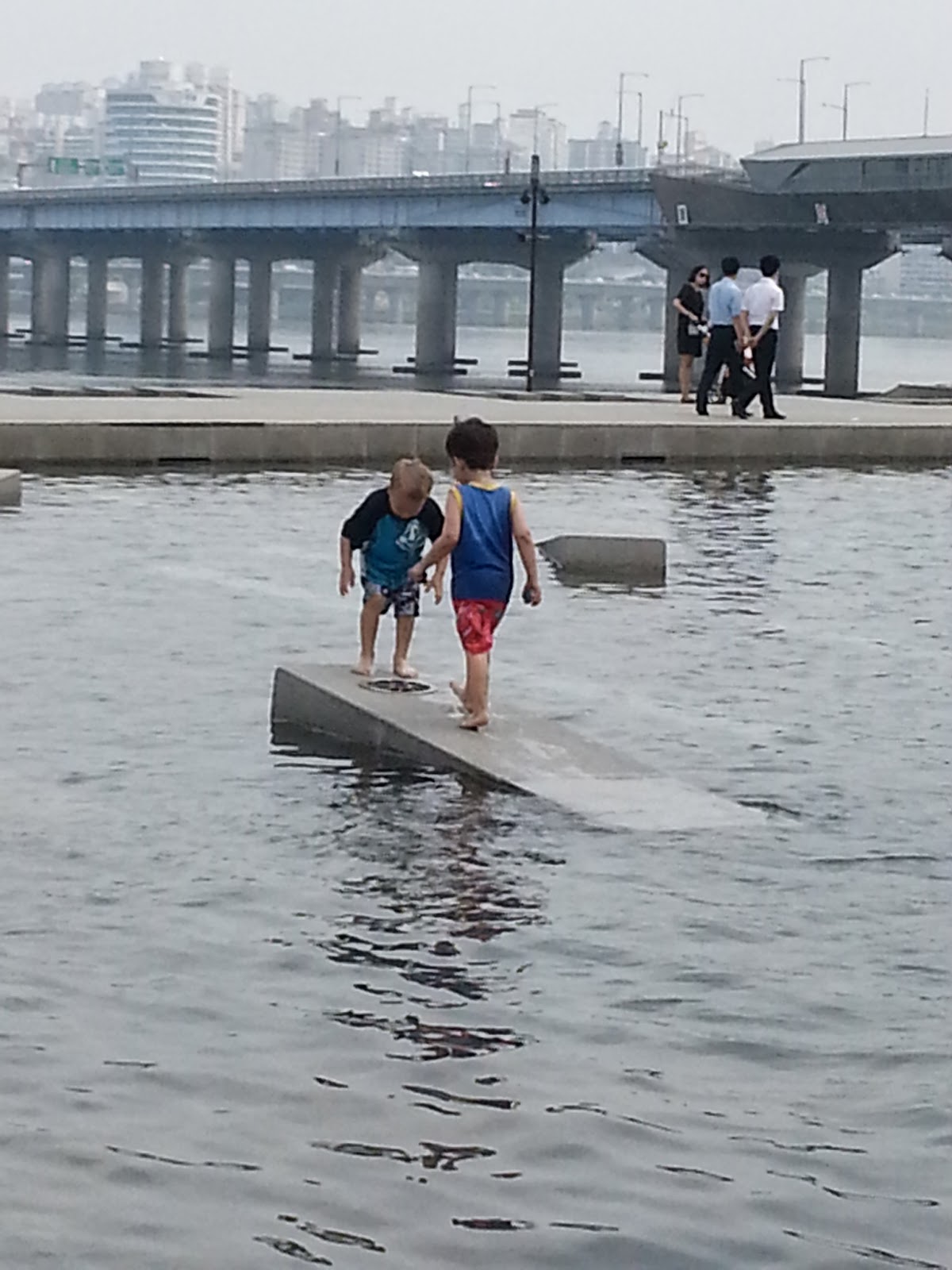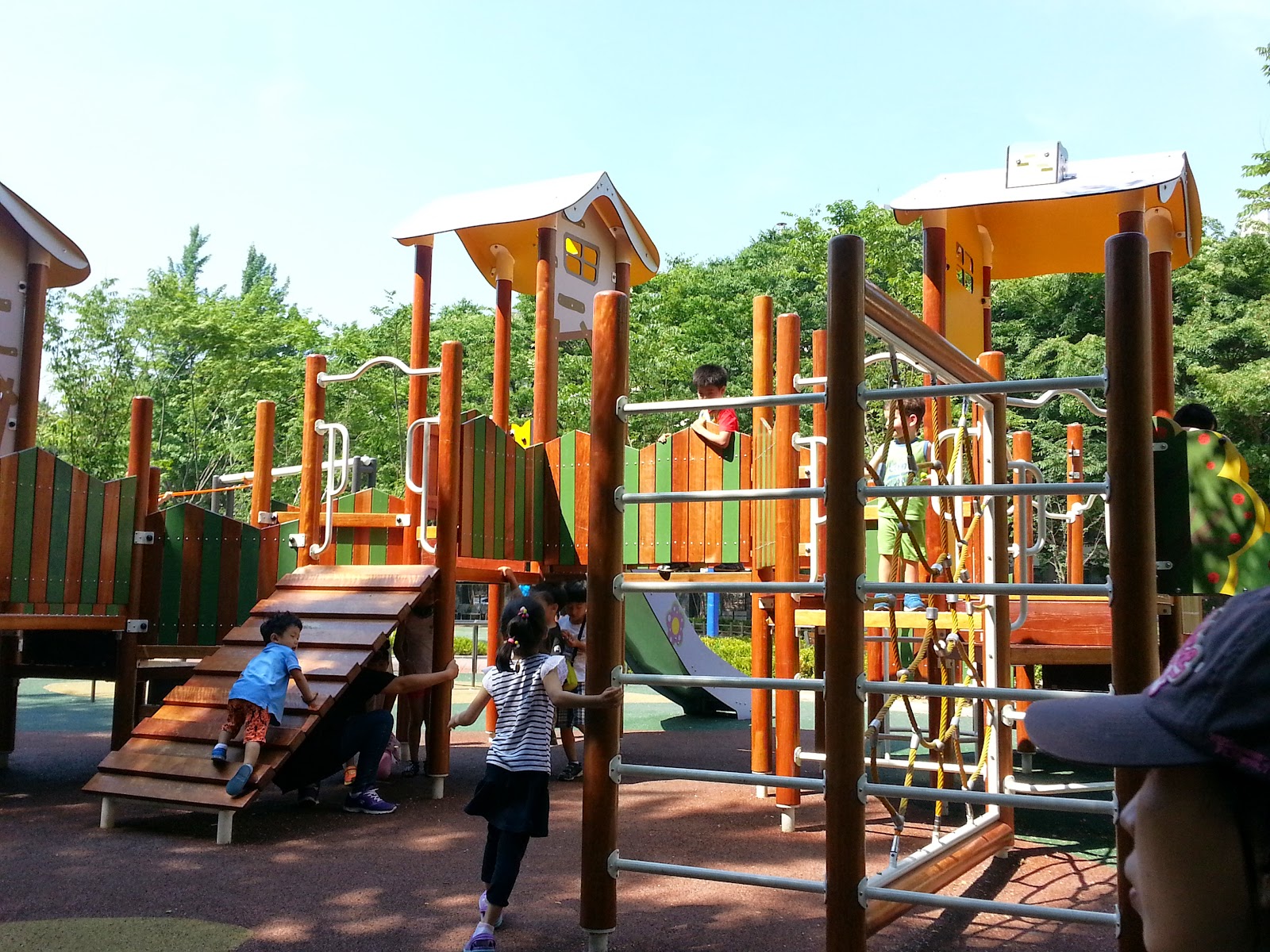We jumped on the subway to Dongguk University and then boarded the free shuttle bus to the theater. The theater is located near Seoul Tower, in Namsan Park, so avoiding the hike up the hill was much appreciated, especially when we were under a time crunch and I was in heels!
We had a few minutes to spare before the event, so we were able to enjoy the grounds a bit. The theater and surrounding building are quite impressive, and there are a number of statues decorating the perimeter. There are additional theater buildings and museums, as well, that we'll have to go back to explore at a different time.
We headed over to the ticket booth and then wandered the lobby -
again, some nice artwork and decor to see while we waited.
Inside the theater, which was excellent, I was able to snap a few pictures of the initial instrument setup on stage - lots of traditional Korean instruments were at the ready.
My favorite to see is the Pyeongyeong, a set of sixteen L-shaped stone chimes, often decorated with ornate colors, dragons, and ducks!
The program consisted of four unique pieces, fusing traditional Korean music with varying styles and interpretations from the composers, performed by the National Orchestra of Korea, which was founded in 1995. Other than some Western instruments in the percussion section and the appearance of a cello and bass in the strings, the orchestra is comprised of master performers on traditional Korean instruments - you can get a sense from their concert program photo:
Concert Program:
Ring of the wind - by Takada Midori, Japan
featuring the composer on various percussion,
Kim Bo-kyoung on Gayagum (12-string zither) and Min Young-chi on Changgu (drum)

Heartbeats by Michael Sidney Timpson, USA
a four movement, jazz infused depiction of the ill-fated day that the Korean Ferry Sewol sank,
featuring Lee Jeong-sik on soprano saxophone
The Lion Dance by Baudouin de Jaer, Belgium
a tone poem consisting of 36 mini-compositions, featuring Korean and French influences,
depicting a lion dancing in the moonlight and progressing through his lifetime
Blessings by Chihchun Chi-sun Lee, Taiwan
a mix of Daepungnyu (a philosophy of balance with nature), Seungmu dance (a Korean ritual dance featuring drumming), and Taiwanese aboriginal music - all dedicated to a return to balance after the recent disasters in Korea
Two things enabled us to enjoy this concert more than others may have:
1) We purchased a concert program: the music director gave very lengthy introductions to each piece - all in Korean - so we were VERY thankful that there were full translations in English of each composer's bio and the notes about each piece.
2) Having a background of formal music education, I think we were listening differently than some others might to this concert of contemporary music, and we were able to appreciate the special attention each composer gave to various techniques on the instruments to evoke the imagery they had described in the notes. One example was a rubbing effect on the strings that Mr. Timpson used in the 2nd movement of his piece to evoke the sound of wind and waves in the early morning hours.
Overall, it was a very enjoyable concert and we'd be happy to go back for future performances. I also may have to add an instrument to the list of "we need to get that" - the Piri, a Korean double reed instrument - cause what oboist wouldn't love that!?
---------------------
And just for fun - on our way home, we grabbed a quick drink from one of the subway platform vending machines. This day's new beverage was a Strawberry Latte - ie. tasty, strawberry milk. Yum!




















































